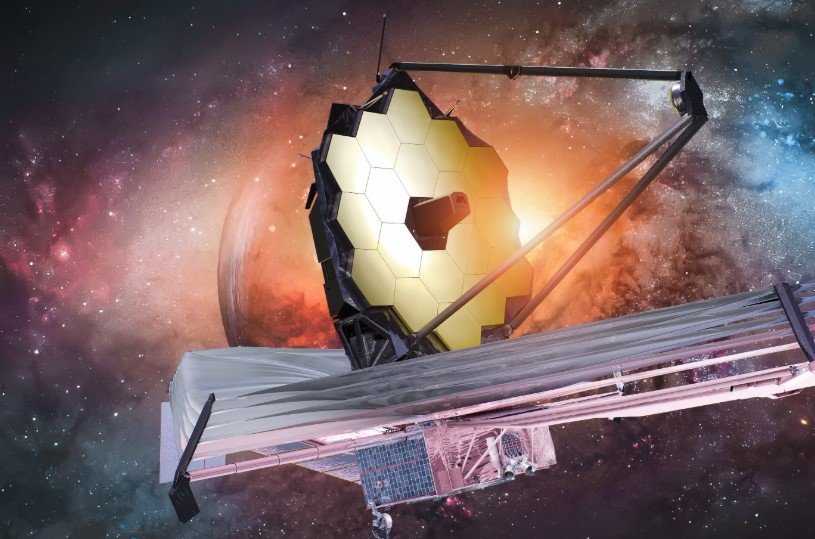NASA’s newest space telescope, SPHEREx, has officially launched with an ambitious mission: to map the entire sky in infrared light. The telescope aims to uncover the secrets of the early universe, galaxy formation, and even the origins of water in space. Here’s why SPHEREx is making waves in the world of space exploration.
NASA’s Spectro-Photometer for the History of the Universe, Epoch of Reionization and Ices Explorer (SPHEREx) blasted off aboard a SpaceX Falcon 9 rocket, embarking on a mission unlike any other. The telescope is set to orbit Earth at an altitude of 420 miles (675 kilometers), where it will begin an extensive two-year journey, scanning the cosmos and mapping it in unprecedented detail.
A Bold New Mission
SPHEREx has been built with one purpose: to capture the entire night sky in infrared light. While other telescopes like the James Webb Space Telescope focus on specific targets in deep space, SPHEREx aims to cover it all, scanning the full sky four times in 102 different wavelengths. This method will offer scientists an unprecedented view of the universe.
As NASA’s first mission specifically designed to map the universe in this way, SPHEREx will use infrared sensors to help answer some of the most fundamental questions about our cosmos. This is a critical step forward in astrophysics.

The telescope’s primary mission? To build a comprehensive three-dimensional map of the universe, revealing the cosmic structure that scientists have long theorized but could never fully observe.
A Telescope Unlike Any Other
Why is SPHEREx so special? It has a broader reach than many of its predecessors, scanning wide areas of space rather than zeroing in on specific objects. With its infrared capabilities, it will detect faint cosmic signatures invisible to other telescopes. These signatures could hold clues to the universe’s earliest moments, galaxy formation, and even the origins of water, which plays a critical role in the development of life.
In contrast to telescopes like the James Webb Space Telescope that focus on deep-space targets, SPHEREx will survey the entire sky at once. As Phil Korngut, an astrophysicist at the California Institute of Technology, said, “SPHEREx is going to produce an enormous three-dimensional map of the entire night sky.” This bold mission will address crucial astrophysical questions, such as the nature of dark matter and the forces that shaped the cosmos.
What sets SPHEREx apart is its ability to scan the sky in 102 wavelengths, which will create an enormous dataset that researchers can study for years to come. It’s not just the quantity of data but the quality, as it will give scientists a new way to view the universe, one that may revolutionize the field of astrophysics.
Investigating Cosmic Inflation and the Origins of Water
One of SPHEREx’s critical objectives is to probe the phenomenon of cosmic inflation. This theory proposes that the universe expanded exponentially faster than the speed of light just moments after the Big Bang. Scientists believe that this rapid expansion created subtle imprints that still exist in the cosmic structure. By studying these imprints, SPHEREx will help researchers understand the early universe’s behavior.
But SPHEREx’s mission goes beyond just studying the Big Bang and cosmic inflation. The telescope will also focus on uncovering the origins of water in space. Understanding how and when water formed in our universe is a critical part of figuring out how life might have developed on Earth and other planets.
Creating a Cosmic Map for the Ages
SPHEREx will take two years to complete its mission, but the data it collects will likely shape astrophysical research for decades. As it orbits Earth, the telescope will map hundreds of millions of galaxies, scanning light from them to reveal the distribution of matter and energy throughout the universe.
This will allow astronomers to map out the cosmic web, the large-scale structure that dark matter and gravity have shaped over billions of years. By studying the distribution of galaxies across time and space, researchers hope to uncover insights into the fundamental forces that have governed the universe’s expansion.
To put it simply, SPHEREx is giving us the ability to see the universe in a way we never could before. The telescope’s infrared vision is like giving astronomers a new set of eyes to look at the night sky. As data begins to pour in, scientists will be able to investigate everything from galaxy formation to the distribution of cosmic materials in ways never before possible.
How SPHEREx Will Change Our Understanding of the Universe
The implications of SPHEREx’s mission are enormous. By mapping the universe in infrared light, scientists hope to piece together the vast cosmic puzzle that has baffled astronomers for centuries. This new mission could change how we understand the fundamental workings of the universe, from the Big Bang to the birth of galaxies.
What’s more, the mission could hold answers to questions about dark matter, cosmic inflation, and the early development of life. The possibility that SPHEREx may uncover the origins of water in space also opens new doors in the search for extraterrestrial life. If water could exist elsewhere in the universe, it could mean that life—just as we know it—might be more common than we once thought.
In essence, SPHEREx’s mission goes beyond simply mapping the universe—it’s about uncovering the very fabric of the cosmos itself.
